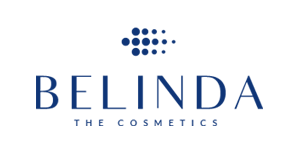Comprehensive Guide to CE Certification and CE Marking: Lifts Directive 2014/33/EU Standards
The Lifts Directive 2014/33/EU Standards is a critical regulation within the European Union (EU) aimed at ensuring the safety, reliability, and performance of lifts and their components. For businesses manufacturing or distributing lifts in the EU, obtaining CE Certification is not just a regulatory requirement but also a strategic move to access a vast and competitive market.
This article provides a detailed overview of the CE Certification process, its benefits, and compliance requirements under the Lifts Directive 2014/33/EU Standards, along with insights into related aspects of CE Marking. Whether you are a lift manufacturer, installer, or distributor, understanding this process is key to navigating the European marketplace successfully.
What Is CE Certification?
CE Certification is a mandatory conformity marking that signifies a product meets the safety, health, and environmental protection standards outlined by EU legislation. For lifts, compliance with the Lifts Directive 2014/33/EU Standards ensures that products are fit for use within the EU and EEA (European Economic Area).
Key Benefits of CE Certification:
Market Access: CE Marking is essential for selling lifts within the EU and EEA.
Consumer Confidence: Demonstrates adherence to stringent safety standards.
Legal Compliance: Helps businesses avoid penalties and legal issues.
Overview of the Lifts Directive 2014/33/EU Standards
The Lifts Directive 2014/33/EU focuses on lifts permanently serving buildings and constructions and their safety components. It applies to both new installations and significant modifications of existing lifts.
Key Provisions:
Scope of Application: Covers passenger lifts and their critical safety components.
Essential Health and Safety Requirements (EHSR): Specifies technical documentation requirements and safety benchmarks.
Harmonized Standards: Aligns with European standards like EN 81-20 and EN 81-50.
Certification Process: How to Achieve CE Compliance for Lifts
Obtaining CE Certification under the Lifts Directive 2014/33/EU Standards involves several key steps:
1. Application and Initial Assessment
Begin by applying to a Notified Body authorized to certify lifts. Provide essential technical documentation, including:
Design Specifications
Risk Assessments
Test Results
2. Compliance with Technical Documentation Requirements
Under the directive, businesses must compile detailed Technical Documentation to demonstrate compliance. This includes:
Detailed drawings and diagrams
Descriptions of safety systems
Results of design calculations and tests
3. Audits and Inspections
A Notified Body conducts thorough audits to ensure:
Compliance with Essential Health and Safety Requirements
Proper installation and functioning of safety components
4. Testing and Verification
Rigorous testing is performed to verify the lift’s adherence to harmonized standards. This includes:
Load tests
Emergency system functionality checks
5. Issuance of CE Certificate
Once compliance is confirmed, the Notified Body issues a CE Certificate, authorizing the affixing of the CE Mark.
Industries Benefiting from CE Certification for Lifts
Compliance with Lifts Directive 2014/33/EU Standards is essential for various industries, including:
Construction: Developers and contractors installing lifts in commercial and residential projects.
Manufacturing: Producers of lift components and safety systems.
Facilities Management: Operators maintaining lift systems in public and private buildings.
Why CE Marking Matters for Businesses
CE Marking underlines a company’s commitment to quality and safety. Key advantages include:
1. Enhanced Marketability
Displaying the CE Mark boosts credibility and assures customers of compliance with EU standards.
2. Competitive Edge
Businesses with CE Certification stand out in a crowded market, gaining an edge over non-compliant competitors.
3. Reduced Liability
Compliance minimizes the risk of accidents and subsequent legal repercussions, safeguarding your brand’s reputation.
How to Stay Compliant: Tips for Businesses
Engage Experts: Partner with experienced consultants and Notified Bodies.
Regular Audits: Conduct periodic reviews to maintain compliance with evolving regulations.
Training: Equip staff with knowledge of Lifts Directive 2014/33/EU Standards.
Documentation Updates: Keep technical files and risk assessments up-to-date.
Conclusion: Take the First Step Toward CE Certification
The Lifts Directive 2014/33/EU Standards sets the benchmark for lift safety and performance within the EU. For businesses aiming to expand their reach, obtaining CE Certification and affixing the CE Mark is non-negotiable. This process not only ensures regulatory compliance but also enhances your product’s marketability and reputation.
Don’t let the certification process overwhelm you. With expert guidance, achieving compliance becomes seamless.
Contact us today to start your certification journey and ensure your lifts meet the highest European standards!
- Get Your Legal Advice
- All Experts Lawyers
- All Experts Lawyers
- Great Discounted Rates
- Fighting for The Average Joe
- Get The Money You Deserve
- All Experts Lawyers
- Justice For All


Point of View
Our Vision
A lawyer or attorney is a person who practices law, as an advocate, attorney, attorney at law, barrister, barrister-at-law, bar-at-law, civil law notary, counsel, counselor, counselor, counselor at law, solicitor, chartered legal executive, or public servant preparing, interpreting and applying law, but not as a paralegal or charter executive secretary. Working as a lawyer involves the practical application of abstract legal theories and knowledge to solve specific individualized problems, or to advance the interests of those who hire lawyers to perform legal services.

